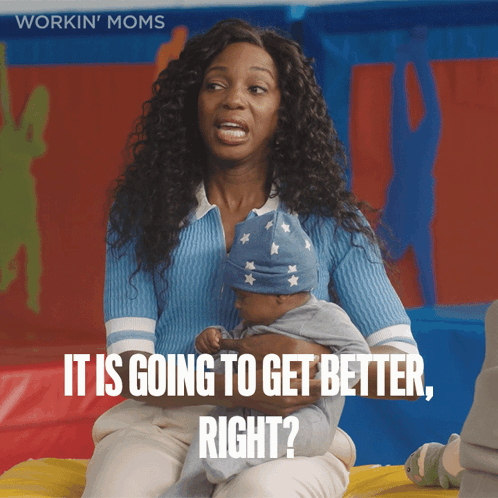Employee Resource Groups: Models of Communities of Practice Driving Social Change
ERGs act as Communities of Practice, fostering shared learning and advocacy. ERGs like "Working Parents" advocated for flexible work during the pandemic. If these models were accessible to broader communities, they could empower diverse groups to drive social change.

Working parents, along with many other communities, were drastically impacted during the pandemic. Kids were home full-time, trying to adapt to online learning, while parents were also at home, adapting to changing schedules, living in fear of an unknown world, and juggling life as unpredictably as ever.

I remember starting a new job during these unpredictable times as a new parent, coming from working as a first responder managing programs at a food pantry during the heart of the pandemic. Due to limited volunteering and high demand, staff spent a year delivering food to the most vulnerable communities in our service area.
As I started a new job in the hunger relief sector, now with a larger purview and working remotely, I entered an organization that was also managing many changes and unpredictability. For the first time in my mid-career, I was part of a few different Employee Resource Groups (ERGs). The two that I joined were named "Working Parents" and a racial affinity group.
In 2022, there were several attempts by our company to get people to return to work on-site again. Things were still a bit unpredictable regarding the pandemic, and we had been very successful at working remotely as a staff member. The staff didn't fully understand why we needed to return to work on-site. This is when I saw the power of these groups. After reading the definitions and characteristics of Communities of Practice (CoPs), I realized they act in very similar ways.
Employee Resource Groups (ERGs) act in many ways as Communities of Practice (CoPs).
The loudest group to speak up was the Working Parents group. They argued that they had found the balance they needed and had proven our company to be as or even more productive during the pandemic. They believed that the mandate to come back to the office should depend on roles and the need to be present rather than an obligation. There were many meetings between group members, letters, and collaborative work between these groups and the organization's executive team. As a result, the organization decided to assess roles and determine who needed to be in the office. They provided and allocated a number of in-person and remote staff to each department and determined that a hybrid schedule of only working two days per week in the office would suffice for in-person collaboration. This was a huge win for this group and for parents working at our organization.
Employee Resource Groups (ERGs) act in many ways as Communities of Practice (CoPs). They have a domain of common interest and a commitment to that domain. They are a community in which they come together to learn from each other and share with each other. Finally, they seek action as a way of practice, and the above example demonstrates that very thing. Communities of Practice are a powerful source of learning, relationship building, and advocacy for action, in addition to being an excellent way to increase your Personal Learning Network. The Working Parents Group at my current organization has monthly meetings and a group chat and organizes activities. We lean on each other's expertise and experiences to do so.
Technology has made these communities even stronger. There are platforms such as social media or even internal spaces Yammer from Microsoft that allow for fast, on-the-spot questions and resources to be used, which makes these spaces even more valuable.
In addition to ERGs, many nonprofit organizations rely on Communities of Practice to gain the resources that our sector may lack and to spread the word about learning opportunities, ways to find more funding, how to work towards more community-centered practices, etc. Food banks across the nation form part of many Communities of Practice, and the national hunger-relief organization has been the convener or facilitator for these spaces. One thing that I know about Communities of Practice is that they require systems and commitment in order for them to work. The vast majority of participants often act as passive recipients of the group, and they may alternate leadership roles. Technology has made these communities even stronger. There are platforms such as social media or even internal spaces Yammer from Microsoft that allow for fast, on-the-spot questions and resources to be used, which makes these spaces even more valuable.

There are many opportunities for practice in relationship building, strengthening PLNs, finding resources, speeding up learning, and even learning from experience. In addition to the potential for social change when these groups take on tasks that are community-oriented, my question remains around the place of these communities, which usually live within organizations that are able to facilitate these groups. How could Communities of Practice strengthen the power of communities across different populations to help advocate for social change? Are Communities of Practice a catalyst for community organizing?




